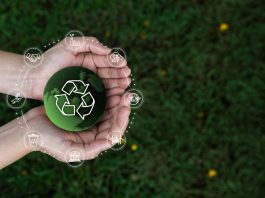In its newly released 2023-2024 Impact Report, the U.S. Plastics Pact has highlighted significant progress in rethinking how plastics are produced, utilised, and repurposed.
With a clear call to action for stronger collaboration among businesses, policymakers, and the public, the report underscores the urgent need to embrace innovative solutions and systemic change to achieve a circular economy for plastics.
Progress in tackling plastic waste
Over the past year, the U.S. Plastics Pact’s network of 135 Activators has made measurable strides in transforming the lifecycle of plastics. This collective effort is yielding tangible results, offering hope for a future circular economy for plastics.
Reducing problematic plastics
A key milestone has been reducing reliance on materials deemed harmful or unnecessary. Currently, 22% of Activators have removed such items from their product lines, with additional efforts underway to meet goals set for 2025.
Redesigning for sustainability
Sustainable packaging has seen a marked improvement, with adoption rates rising to 50% compared to just 36% in 2021. These advancements are not only enhancing recyclability but also fostering a shift toward circular design principles.
Incorporating recycled content
The integration of post-consumer recycled (PCR) materials in packaging has also increased, now averaging 11% across products. This is a notable step forward on the journey to the Pact’s ambitious 2025 target of 30%.
The report also outlines the roadmap for the future, extending some goals to 2030 with an emphasis on eliminating virgin plastics, scaling reuse systems, and improving recycling infrastructure.
Innovation driving a new era
Members of the Pact are leading the charge with groundbreaking innovations designed to tackle plastic waste at its source.
Beauty industry solutions
Pact Collective has launched NewMatter™ resin, a 100% recycled-content material, to address the challenges of hard-to-recycle plastics in the beauty sector. This innovation supports scalable, closed-loop systems that are reshaping industry practices.
Molecular recycling advancements
Eastman has opened the world’s largest molecular recycling facility in Tennessee, harnessing advanced technology to process plastics that would otherwise end up in landfills. This approach not only diverts waste but also reduces greenhouse gas emissions.
Stretch film revolution
Trioworld’s 49ga Axis Loop film exemplifies efficiency and sustainability, cutting plastic use by up to 40% while incorporating 30% recycled content. The thinner yet high-performing material significantly reduces carbon emissions.
Paperboard packaging transition
In another noteworthy achievement, Kraft Heinz has replaced plastic with recyclable paperboard for its Crystal Light packaging. This shift eliminates three million pounds of plastic annually and aligns with the company’s goal of cutting virgin plastic use by 20% by 2030.
Federal action: A vital missing piece
While innovation is a powerful driver of change, the U.S. Plastics Pact’s report stresses that achieving a circular economy for plastics requires cohesive federal policies.
National standards for recycling, extended producer responsibility (EPR) initiatives, and comprehensive data collection are critical for creating a unified framework. Such measures are essential to scale recycling infrastructure and drive systemic change.
Beyond policy reforms, the transition to a circular economy for plastics demands collective effort from all sectors of society.
Every individual has the power to make a difference by prioritising recycling, supporting reusable packaging, and making sustainable purchasing decisions. These small but significant actions collectively accelerate progress.
Public-private partnerships are essential for fostering innovation and funding the infrastructure needed to support circular systems. By working together, governments and businesses can create cost-effective solutions that benefit the planet and the economy alike.
Leading the way in sustainability not only positions the United States as a global innovator but also reduces dependency on finite resources and mitigates the risks associated with climate change.
Jonathan Quinn, CEO of U.S. Plastics Pact, commented: “Every individual and organisation has a role to play. From the products we choose to the systems we design, we must act with urgency to ensure plastics remain an asset, not a liability.
“By working together – through personal responsibility, public-private collaboration, and innovation – we can drive change and strengthen America’s competitiveness in the global circular economy.”
Reimagining plastics for a sustainable future
The U.S. Plastics Pact’s 2023-2024 Impact Report is more than a celebration of achievements – it is a rallying cry for action.
By embracing innovation, strengthening partnerships, and taking shared responsibility, the Pact is steering the nation toward a future where plastics are no longer a burden but a resource in a thriving circular economy.





